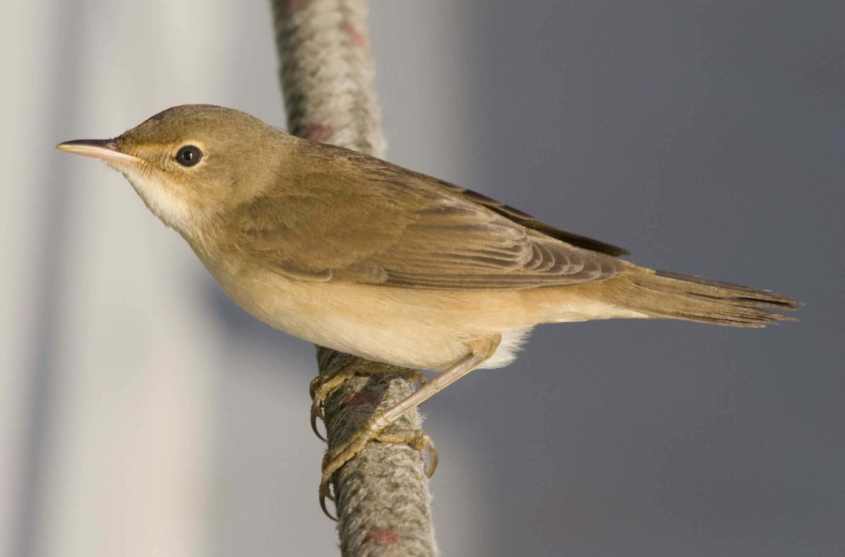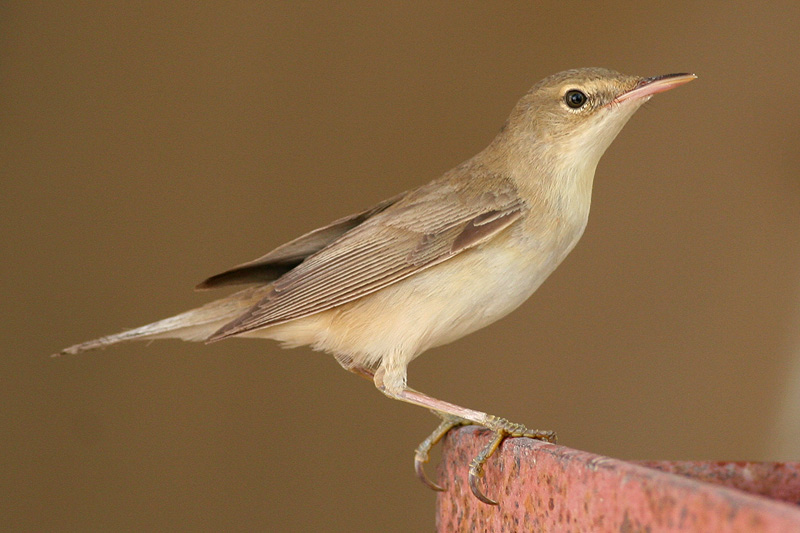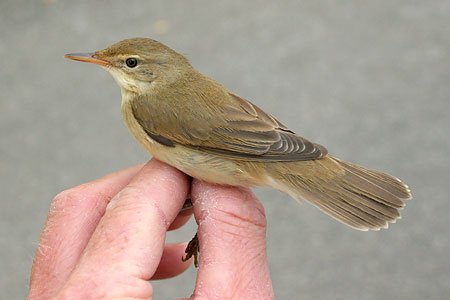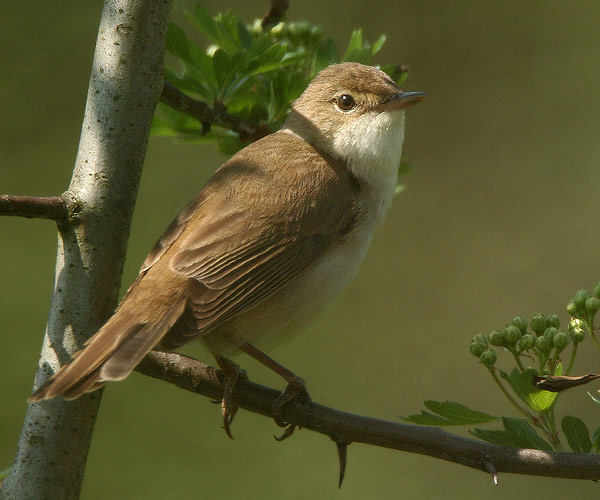
Acrocephalus palustris
SUBFAMILY
Sylviinae
TAXONOMY
Acrocephalus palustris Bechstein, 1798.
OTHER COMMON NAMES
French: Rousserolle verderolle; German: Sumpfrohrsдnger;
Spanish: Carricero Poliglota.
PHYSICAL CHARACTERISTICS
5.1 in (13 cm); 0.4–0.7 oz (10–20 g). Heavy, medium-sized
warbler with uniform olive-brown upperparts, creamy underparts,
buffy wash on sides of breast and flanks, white throat,
and light line from eye to base of bill.
DISTRIBUTION
Breeds throughout Central and Western Europe, excluding
Iberia and British Isles to southern Scandinavia and western
Russia. Winters in Southeast Africa.
Locustella naevia
Breeding Nonbreeding
Acrocephalus palustris
HABITAT
Breeds in tall herbaceous vegetation and woody cover, often in
moist areas, but also on dry slopes, and in parks and open forest.
BEHAVIOR
Solitary and territorial in breeding season, some males polyterritorial.
Posture somewhat upright. Song a complex, sweet
warble learned by mimicry of other birds. Female sings during
courtship.
FEEDING ECOLOGY AND DIET
Gleans insects and spiders from low vegetation. Also takes
snails, and rarely berries.
REPRODUCTIVE BIOLOGY
Mostly monogamous, but serial monogamy and opportunistic
polygyny occur. Courtship may include aerial dance involving
both sexes. Nest is built by female; cylindrical cup of leaves
and plant material 3.3–6.6 ft (1–2 m) from ground in tall vegetation,
with rim woven around supporting vegetation. Three to
six eggs incubated and young, cared for by both parents, leave
nest after 11–12 days, remain dependent 15–19 days.
CONSERVATION STATUS
Not threatened.
SIGNIFICANCE TO HUMANS
None known.
Photo Gallery of - Marsh warbler




 Animalia Life
Animalia Life